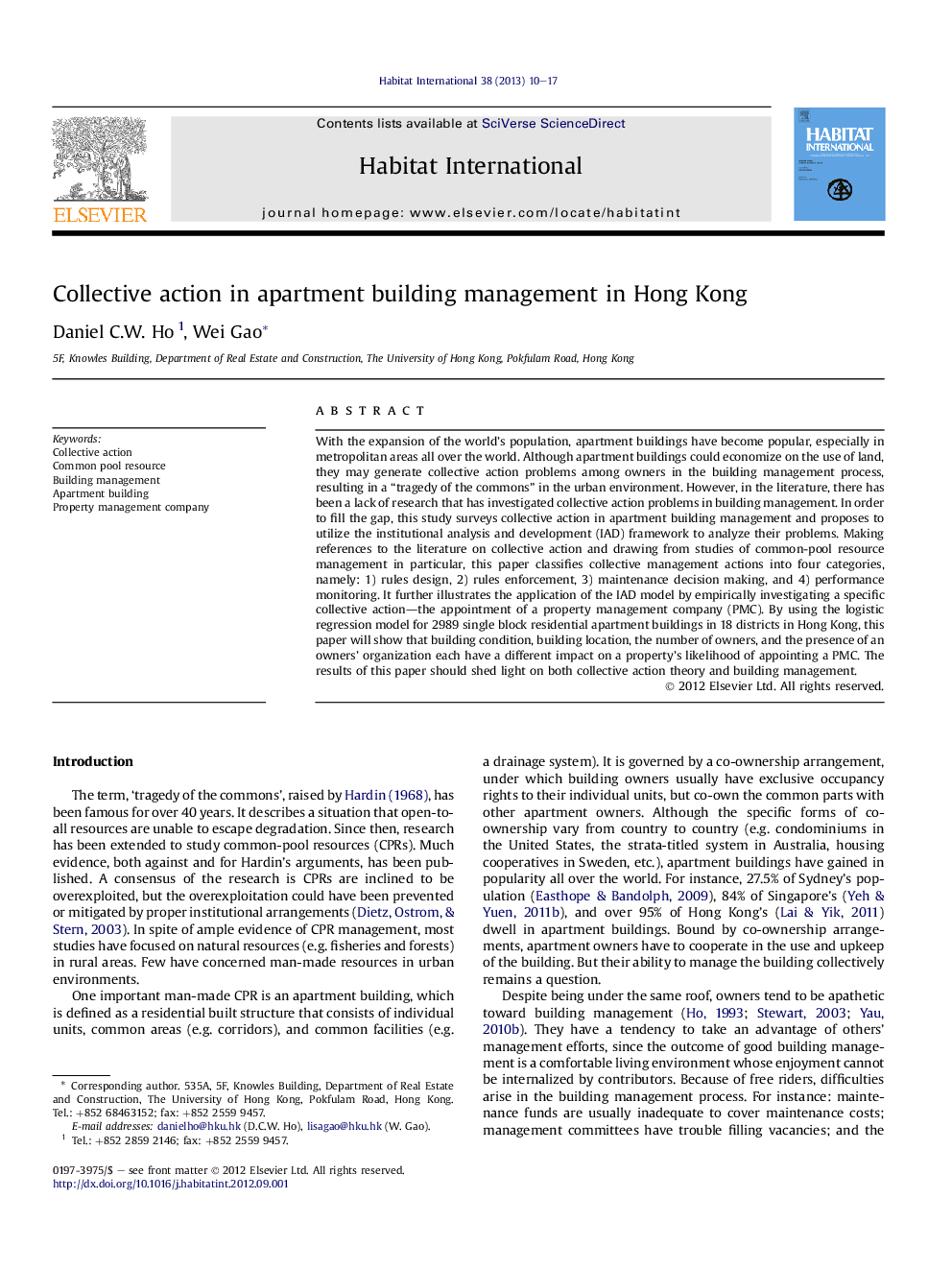| کد مقاله | کد نشریه | سال انتشار | مقاله انگلیسی | نسخه تمام متن |
|---|---|---|---|---|
| 1048298 | 1484504 | 2013 | 8 صفحه PDF | دانلود رایگان |

With the expansion of the world's population, apartment buildings have become popular, especially in metropolitan areas all over the world. Although apartment buildings could economize on the use of land, they may generate collective action problems among owners in the building management process, resulting in a “tragedy of the commons” in the urban environment. However, in the literature, there has been a lack of research that has investigated collective action problems in building management. In order to fill the gap, this study surveys collective action in apartment building management and proposes to utilize the institutional analysis and development (IAD) framework to analyze their problems. Making references to the literature on collective action and drawing from studies of common-pool resource management in particular, this paper classifies collective management actions into four categories, namely: 1) rules design, 2) rules enforcement, 3) maintenance decision making, and 4) performance monitoring. It further illustrates the application of the IAD model by empirically investigating a specific collective action—the appointment of a property management company (PMC). By using the logistic regression model for 2989 single block residential apartment buildings in 18 districts in Hong Kong, this paper will show that building condition, building location, the number of owners, and the presence of an owners' organization each have a different impact on a property's likelihood of appointing a PMC. The results of this paper should shed light on both collective action theory and building management.
► An empirical test of the institutional analysis and development framework is provided.
► The non-linear relation between group size and appointment action is confirmed.
► A positive impact of owners organizations on the appointment action is reported.
Journal: Habitat International - Volume 38, April 2013, Pages 10–17